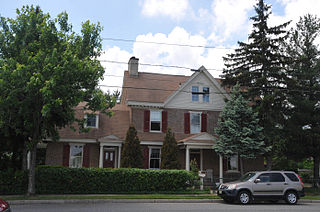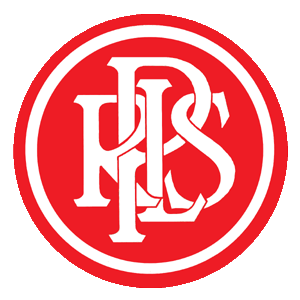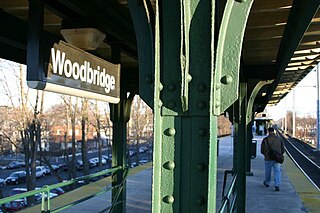
Route 47 is a state highway in the southern part of New Jersey. It runs 75.20 mi (121.02 km) from Atlantic Avenue in Wildwood, Cape May County, north to U.S. Route 130 in Brooklawn, Camden County. It is also referred to as Delsea Drive, as it connects the Delaware River near Brooklawn to the Atlantic Ocean in Wildwood. This name was assigned by the New Jersey Legislature in 1933. The route runs through rural areas of Cape May and southern Cumberland counties as a two-lane road. Traffic jams along this portion of Route 47 are commonplace in the summer vacation season and can stretch for miles due to the missing southern section of Route 55, where all Jersey Shore-bound traffic enters the small two-lane road. North of here, the route runs through the cities of Millville and Vineland before entering Gloucester County, where it passes through more rural areas as well as Clayton and Glassboro. Past Glassboro, it heads through suburban areas in Washington and Deptford townships before running through Westville and Brooklawn. Route 47 is the longest signed state route in New Jersey.

Route 55 is a freeway in the southern part of the U.S. state of New Jersey. Also known as the Veterans Memorial Highway, it runs 40.54 miles (65.24 km) from an intersection with Route 47 in Port Elizabeth north to an interchange with Route 42 in Gloucester County. The Route 55 freeway serves as a main road through Cumberland and Gloucester counties, serving Millville, Vineland, and Glassboro. It is used as a commuter route north to Philadelphia and, along with Route 47, as a route from the Delaware Valley to the Jersey Shore resorts in Cape May County. Route 55 has a posted speed limit of 65 miles per hour (105 km/h) for most of its length.

Westville is a borough in Gloucester County, in the U.S. state of New Jersey. As of the 2020 United States census, the borough's population was 4,264, a decrease of 24 (−0.6%) from the 2010 census count of 4,288, which in turn reflected a decline of 212 (−4.7%) from the 4,500 counted in the 2000 census. Westville has been called "The Gateway to South Jersey!"

Route 162 is an unsigned 0.70-mile (1.13 km) long state highway in Lower Township, New Jersey, United States. The highway's designation consists entirely of a bridge on Seashore Road, which is known as Relocated Seashore Road. The southern terminus of the highway is an intersection with County Routes 641 and 626 in Lower Township. After crossing the Cape May Canal, Route 162 terminates at an intersection with County Routes 603 and 626 in Lower Township. Route 162 and County Route 626 date back to the 1850s, when local businessmen and county financial Richard Holmes put together the Cape May Turnpike. The turnpike was chartered in 1854, but construction did not begin until 1857, with completion in April of the next year. The turnpike however, caused a lot of controversy, and struggled to live. For many years, railroads were proposed, becoming possible competition for Holmes, who did not appreciate the idea. The railroad was constructed in 1863, just nine years after the charter of the turnpike syndicate.

The PATCO Speedline, signed in Philadelphia as the Lindenwold Line and also known colloquially as the PATCO High Speed Line, is a rapid transit route operated by the Port Authority Transit Corporation (PATCO), which runs between Philadelphia, Pennsylvania, and Camden County, New Jersey.

MARC is a commuter rail system in the Washington–Baltimore area. MARC is administered by the Maryland Transit Administration (MTA) and operated under contract by Alstom and Amtrak on track owned by CSX Transportation (CSXT) and Amtrak. In 2023, the system had a ridership of 3,860,600, or about 12,400 per weekday as of the fourth quarter of 2023, less than pre-COVID-19 pandemic weekday ridership of 40,000.

The Northeast Corridor Line is a commuter rail service operated by NJ Transit between the Trenton Transit Center and New York Penn Station on Amtrak's Northeast Corridor in the United States. The service is the successor to Pennsylvania Railroad commuter trains between Trenton and New York, and is NJ Transit's busiest commuter rail service. After arrival at New York Penn Station, some trains load passengers and return to New Jersey, while others continue east to Sunnyside Yard for storage. Most servicing is done at the Morrisville Yard, at the west end of the line.

The Pennsylvania-Reading Seashore Lines was a railroad that operated in South Jersey in the 20th century. It was created in 1933 as a joint consolidation venture between two competing railroads in the region: the Pennsylvania Railroad and the Reading Company.

Lindenwold station is a train station in Lindenwold, New Jersey, United States, served by the NJ Transit Atlantic City Line regional rail service and the rapid transit PATCO Speedline. Lindenwold is the eastern terminus of PATCO; the system's headquarters and maintenance facility are located adjacent to the station in neighboring Voorhees.

The Philadelphia, Wilmington and Baltimore Railroad (PW&B) was an American railroad that operated independently from 1836 to 1881. Headquartered in Philadelphia, it was greatly enlarged in 1838 by the merger of four state-chartered railroads in three Mid-Atlantic states to create a single line between Philadelphia and Baltimore.
The National Railway or National Air Line Railroad was a planned air-line railroad between New York City and Washington, D.C. in the United States around 1870. Part of it was eventually built from New York City to Philadelphia by the Delaware and Bound Brook Railroad and the Delaware River Branch of the North Pennsylvania Railroad, leased by the Philadelphia and Reading Railway, in 1879, and becoming its New York Branch. The line was intended to provide an alternate to the various monopolies that existed along the route, specifically the United New Jersey Railroad and Canal Companies and their Camden and Amboy Railroad, and as such had a long struggle to be built.

Metuchen station is an active commuter railroad train station in the borough of Metuchen, Middlesex County, New Jersey. Trains at Metuchen station are serviced by New Jersey Transit's Northeast Corridor Line between Trenton Transit Center or Jersey Avenue and New York Penn Station. The next station to the south is Edison while the next station to the north is Metropark. Amtrak services cross through the station without stopping. The station consists of two side platforms with a wooden station depot on the northbound tracks. Metuchen's station depot and the New York-bound platform are accessible from Woodbridge Avenue while the Trenton-bound platform comes from Main Street. There is no station agent at Metuchen station, however ticket vending machines are available.

Woodbridge is a commuter railroad station in Woodbridge Township, Middlesex County, New Jersey, United States. Located on NJ Transit's North Jersey Coast Line, it is one of three active railroad stations in the eponymous township, including Avenel to the north on the same line and Metropark station on the Northeast Corridor Line. Woodbridge station is located on Pearl Street at the intersection with Brook Street, where stairs to the single island platform that serves trains are located.
The West Jersey and Seashore Railroad (WJ&S) was a Pennsylvania Railroad subsidiary in the U.S. state of New Jersey with a connection to Philadelphia. It was formed through the merger of several smaller roads in May 1896. At the end of 1925 it operated 379 miles (610 km) of road on 717 miles (1,154 km) of track; that year it reported 166 million ton-miles of revenue freight and 332 million passenger-miles. The railroad became part of Pennsylvania-Reading Seashore Lines in 1933.
The Atlantic City Railroad was a Philadelphia and Reading Railway subsidiary that became part of Pennsylvania-Reading Seashore Lines in 1933. At the end of 1925, it operated 161 miles (259 km) of road on 318 miles (512 km) of track; that year it reported 43 million ton-miles of revenue freight and 204 million passenger-miles.

The Glassboro–Camden Line (GCL) is a planned 18-mile (29 km) diesel multiple unit (DMU) light rail system to be located in South Jersey.
The Vineland Secondary is a rail line owned, operated and maintained by Conrail Shared Assets Operations for the use of CSX Transportation and Norfolk Southern Railway. It begins at Pavonia Yard in Camden and heads south, with a spur serving the Port of Camden. At Woodbury it junctions with the Salem Branch and Penns Grove Secondary, and continues to Millville, passing through namesake Vineland. At its southern end it connects to the OmniTRAX-owned Winchester and Western Railroad. The line is used exclusively for freight, however, the northern portion is planned to be used for the proposed Glassboro–Camden light rail line.

The Hightstown Industrial Track is a rail line in New Jersey, owned and operated by Conrail Shared Assets Operations (CSAO). The line runs from Jamesburg, New Jersey to the current end of track at Cranbury, New Jersey. The line was built by the Camden & Amboy Railroad (C&A) one of the first railroads in the country. It has been operated by C&A, the Pennsylvania Railroad, Penn Central, and finally, Conrail.

Woodbury is a defunct commuter railroad station in the city of Woodbury, Gloucester County, New Jersey. Located at the junction of Station Road and Cooper Street, the station served multiple lines of the Pennsylvania-Reading Seashore Lines and the Pennsylvania Railroad. Trains out of Woodbury serviced lines to Salem, Millville, Penns Grove/Carneys Point and Cape May. Woodbury station consisted of two side platforms and a 72-by-20-foot brick station depot.

Glassboro is an inactive train station in Glassboro, New Jersey which served passengers from 1863–1971. Its station house was restored c. 2015. It is located at the edge of the Rowan University campus. Listed as the West Jersey Rail Road Glassboro Depot, it was added to the National Register of Historic Places on April 14, 2020, for its significance in architecture and transportation.

















